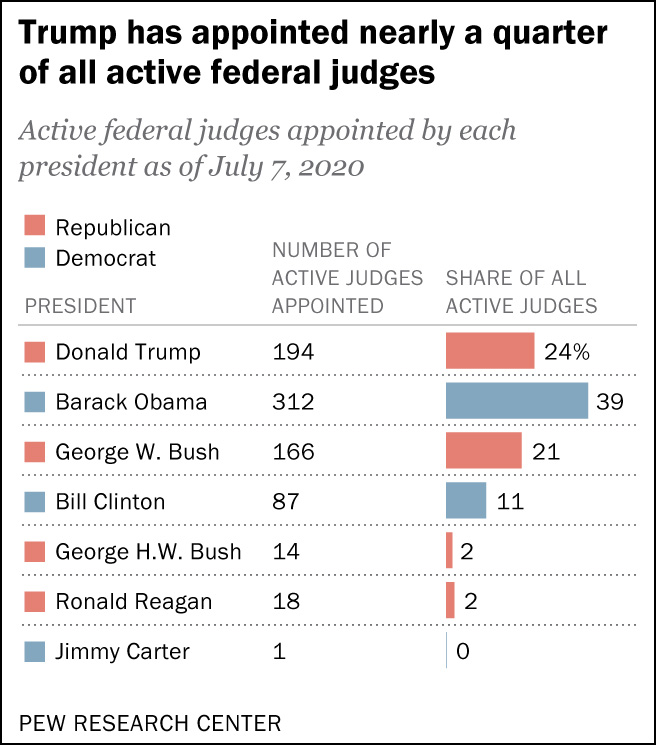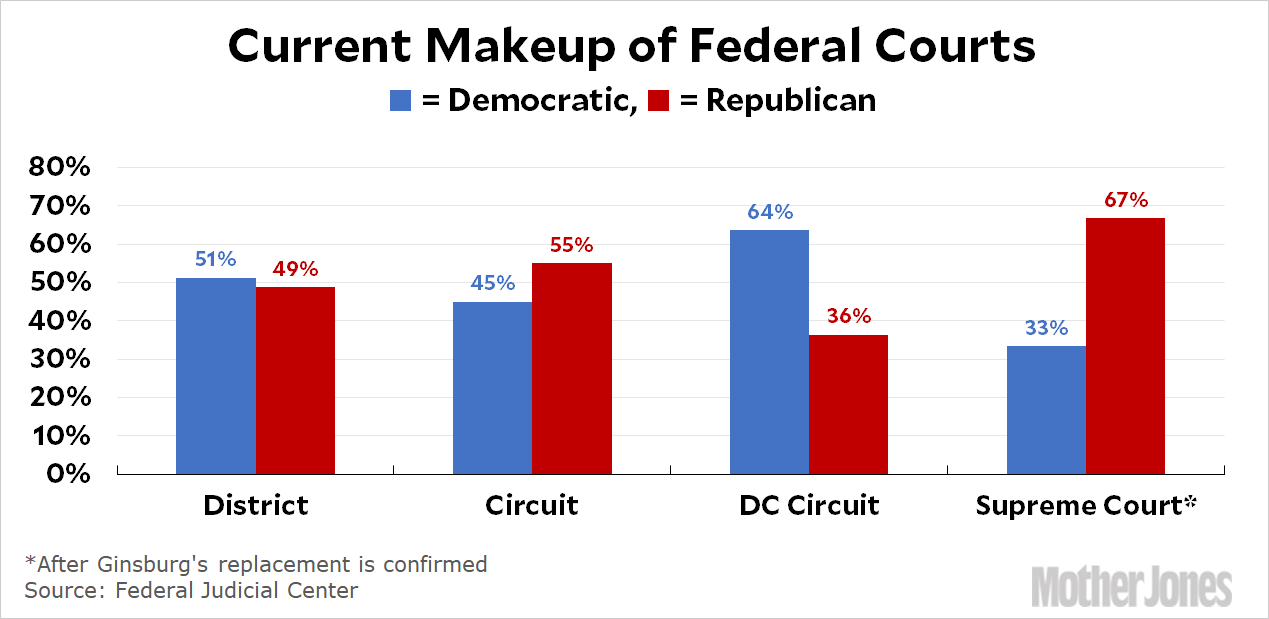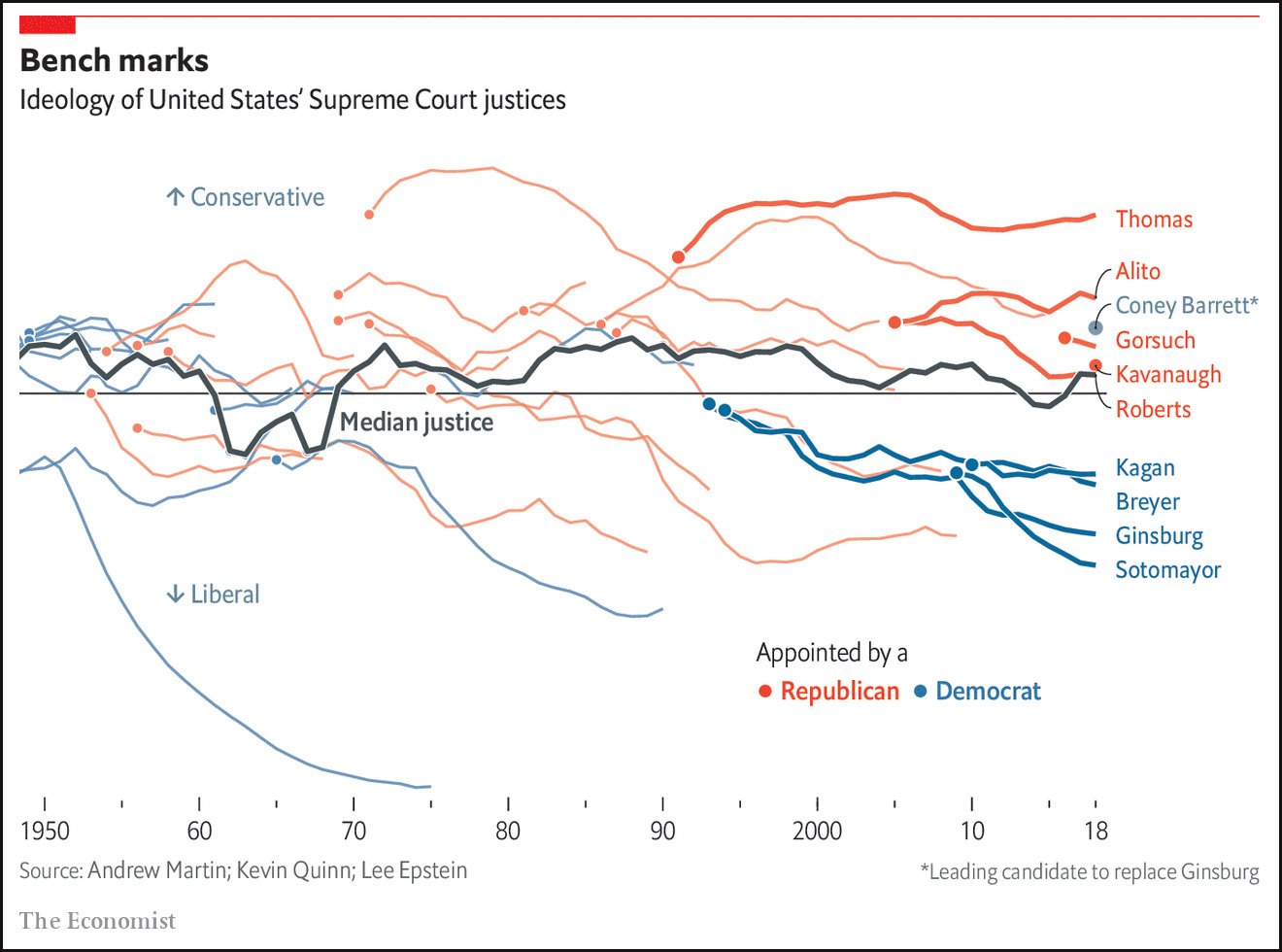Donald Trump has been a busy bee when it comes to appointing federal judges. Nevertheless, the federal judiciary is split about evenly between the parties, with 51 percent of active judges appointed by Democrats and 49 percent appointed by Republicans:

There’s a bigger difference at the top of the judiciary. Among circuit court judges, which in practice are the final arbiters of most case law, Republicans have appointed 55 percent of all active judges and Democrats only 45 percent. However, the DC circuit—often considered a “farm team” for the Supreme Court because it deals largely with key cases involving federal agencies—is safely in Democratic hands despite strenuous efforts of Republicans to keep this from happening. At the highest level, 67 percent of Supreme Court judges will be Republican-appointed once Trump’s replacement for Ruth Bader Ginsburg is confirmed. With the exception of a couple of years in the early ’90s, this will be the first time in decades that the Supreme Court wasn’t balanced 5-4 (or 4½-4½, depending on how you view things). Here’s a breakdown of what the federal judiciary currently looks like:

Finally, here’s a chart from the Economist that estimates the ideology of the Supreme Court over the past 70 years:

As you can see, aside from a short and small liberal tilt during the Obama administration, the Supreme Court has been conservative ever since the Nixon era. It’s now conservative again, and replacing Ginsburg with a conservative justice will make it even more so.

















